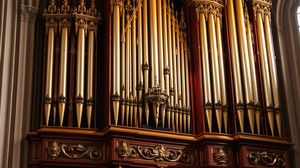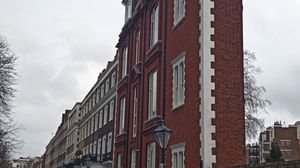
The Albert Memorial in Kensington is a masterpiece of Gothic Revival architecture situated in London's famous Kensington Gardens. Erected by Queen Victoria in memory of her beloved husband Prince Albert, the memorial stands as a poignant tribute to his life and achievements, following his death in 1861. Designed by Sir George Gilbert Scott, it was unveiled in 1872 and remains one of the grandest high-Victorian Gothic structures in the United Kingdom.
The centerpiece of the Albert Memorial is a large statue of Prince Albert himself, seated and holding a catalogue of the Great Exhibition, which he inspired and helped bring to fruition in 1851. The monument's pinnacle soars to a height of around 54 meters, making it a striking feature against the skyline of Hyde Park. Crafted predominately in bronze and gilded, the detail and craftsmanship on display are truly exquisite.
The Memorial is surrounded by elaborate sculptures that symbolize the arts, sciences, and various parts of the world, reflecting Albert's enthusiasm and support for global, intellectual, and cultural exchange. Four larger-than-life corner groups represent Europe, Asia, Africa, and America, each depicted by an animal native to the continent — a bull, elephant, camel, and bison respectively.
An intriguing feature of the memorial is the Frieze of Parnassus, a decorative band that wraps around the monument base and showcases 169 individual figures. These figures represent celebrated painters, poets, sculptors, musicians, and architects from history. It is a testament to the Victorian-era reverence for the great cultural and intellectual minds of the past.
The memorial underwent an extensive conservation project that concluded in 1998, during which the statue of Prince Albert was restored to its original gold-leaf finish after years of being lacquered black. This brilliant restoration allows visitors to marvel at the monument as it would have been seen in the 19th century, offering a vibrant glimpse into the past.
Though seemingly peaceful today, the monument was a subject of controversy and discussion during its early years, with some critics describing it as overblown with symbolism. However, it has since become a cherished historic gem, recognized as a Grade I listed building, marking its national significance as a part of Britain's rich cultural heritage.

Making the Most of Your Visit:
Start your visit by standing back and taking in the entire structure when you first arrive. You cannot appreciate its grandeur unless you get a full view, especially since each side offers different artistic details. Also, try and see it at different times of day if you can—early morning and late afternoon light can create stunning effects with the gold leaf on Albert's statue shining brightly.
Take a close look at the Frieze of Parnassus that runs around the base. It's fascinating to try and spot some of the famous figures depicted there. Keen eyes might find the likes of Raphael and Michelangelo; it's like a who's who of great artists and thinkers immortalized in stone.
If you're interested in the craftsmanship, bring a pair of binoculars to better view the intricate details on the higher sections of the memorial. Even from the ground, the precision of the carvings and sculptures are magical when seen up close.
Don't miss the colourful mosaics found around Albert's statue. They add a vibrant touch to the memorial and are sometimes overlooked due to their subtlety compared to the more obvious sculptures. These mosaics are truly a delight when the sunlight hits them just right.
Lastly, be sure to walk around the memorial's perimeter, as its location in Kensington Gardens offers excellent views of nearby landmarks. You'll also pass by many interesting sculptures throughout the gardens, making for a relaxing and enriching stroll.

Visiting Times & Costs:
The Albert Memorial is open to the public year-round as it is an outdoor monument situated within Kensington Gardens. There is no entrance fee to access the memorial itself or to view it, making it a popular attraction for visitors exploring the park.
The area is generally accessible at all times, though it is advisable to visit during daylight hours for optimal viewing of the details and for safety reasons.
Kensington Gardens, where the memorial is located, is open from 6:00 am until dusk throughout the year, and access to the gardens is free. Note that weekend and holiday afternoons can be particularly busy.
The memorial site is fully accessible, with paved pathways suitable for wheelchairs and strollers. However, the intricate details of the monument are best viewed from a distance unless using binoculars or other magnification devices.

Address & Map:

Nearby:























